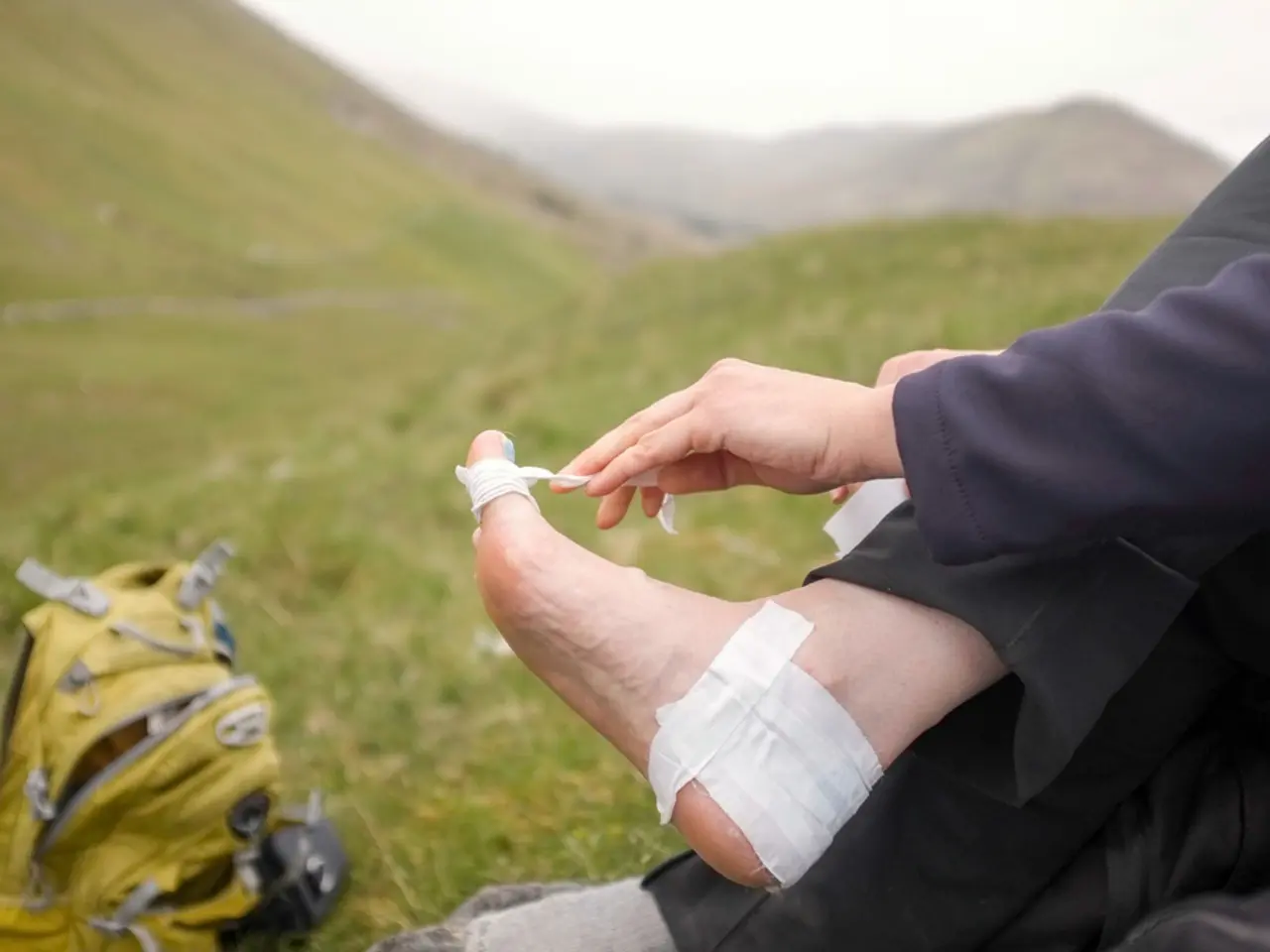Ulcer on the skin: Causes, categories, indications, and remedies
Skin ulcers, open wounds that can develop on any part of the skin, are a common health concern. While some mild ulcers can be treated at home, infected ulcers require medical attention.
Common types of skin ulcers include venous ulcers, arterial ulcers, diabetic ulcers, and pressure ulcers (bedsores).
Venous ulcers, the most common type, are caused by chronic venous insufficiency leading to venous hypertension, tissue edema, inflammation, and skin breakdown. They usually appear as shallow ulcers with irregular borders, typically on the medial lower leg, often accompanied by signs like varicose veins and skin discoloration.
Arterial ulcers, on the other hand, result from peripheral arterial disease or atherosclerosis. These ulcers are typically painful, located over pressure points such as the lateral malleolus or top of the foot, and have a characteristic "punched-out" appearance with necrotic tissue.
Diabetic ulcers, common in people with diabetes, are often neuropathic or neuro-ischemic in origin and may be painless due to nerve damage. These ulcers tend to form over weight-bearing areas and are prone to infection.
Pressure ulcers (bedsores) are caused by prolonged pressure or friction on the skin, leading to tissue damage and ulcers, especially over bony prominences.
Symptoms of skin ulcers include a sore that does not heal for more than a month, red, swollen, and inflamed skin around the wound, drainage from the ulcer, which may be clear or pus-filled, pain or numbness around the ulcer, foul odor from the wound, and in severe cases, the presence of black tissue indicating serious infection or gangrene.
Treatment for skin ulcers depends on the severity and the underlying cause. It typically involves identifying and managing the underlying cause, regular wound care, use of antibiotics if infection is present, compression therapy in venous ulcers, offloading pressure for diabetic or pressure ulcers, patient education on prevention and ongoing care, and in severe or non-healing cases, advanced therapies or surgical intervention.
It is essential to seek medical advice if one suspects they have a skin ulcer or if a wound is healing very slowly. If left untreated, skin ulcers can progress into chronic wounds or dangerous infections, leading to complications such as cellulitis, osteomyelitis, infections in the bone or joints, and gangrene.
Moreover, Buruli ulcer, a medical condition caused by the Mycobacterium ulcerans bacteria, can form large ulcers on the arms and legs. If left untreated, Buruli ulcer can result in permanent physical damage and disability.
Prevention measures include treating medical conditions that cause poor circulation, quitting smoking, maintaining a healthy weight, and avoiding sitting or lying in the same position for too long.
In conclusion, understanding the symptoms, causes, and treatment approaches for skin ulcers is crucial for timely diagnosis and effective management. If you suspect a skin ulcer, consult a healthcare provider immediately.
Skin ulcers, due to being open wounds with a potential for infection, require medical attention when infected. Ranging from venous to pressure ulcers, common types of skin ulcers are often caused by chronic conditions like venous insufficiency, poor circulation, or prolonged pressure. The symptoms can include pain, drainage, redness, and foul odor, and in severe cases, signs of gangrene.
Treatment for skin ulcers involves managing the underlying cause, regular wound care, antibiotics if needed, compression therapy for venous ulcers, offloading pressure for diabetic or pressure ulcers, patient education, and in severe or non-healing cases, advanced therapies or surgery. Prevention is key in avoiding skin ulcers by treating medical conditions that cause poor circulation, quitting smoking, maintaining a healthy weight, and avoiding prolonged sitting or lying in the same position.
Interestingly, Buruli ulcer, caused by a specific bacteria, can lead to large and disabling ulcers on the arms and legs if left untreated. This medical condition emphasizes the importance of seeking prompt medical advice for any suspected skin ulcer or slow-healing wound, as untreated ulcers can lead to complications such as dangerous infections and disability.
Furthermore, a healthy lifestyle and proper skincare practices can prevent skin ulcers. Given the association of obesity and various medical conditions, including asthma and non-small cell lung cancer (NSCLC), maintaining a healthy weight is essential for overall health and wellness.
In addition, Beyond skin ulcers, understanding and managing other medical conditions like bipolar disorder, diabetes, or asthma is critical to prevent health-related complications. Predictive science in medicine will continue to aid in early detection and effective management of various health-related issues.




